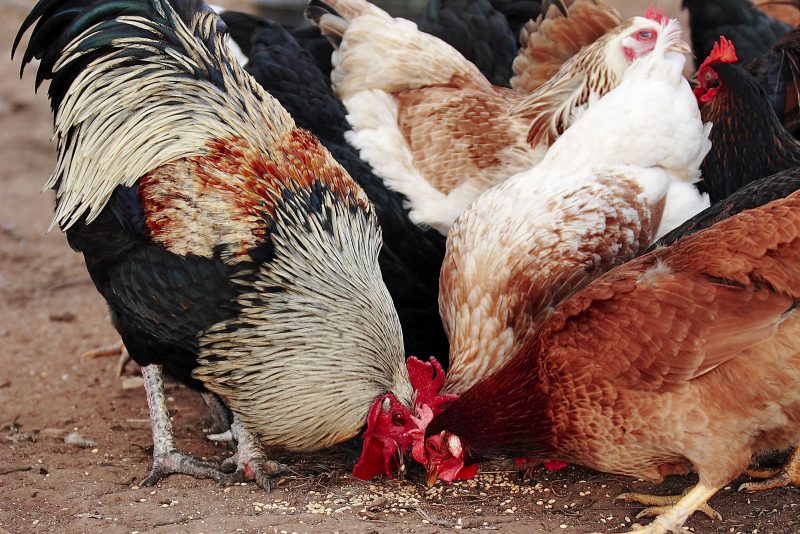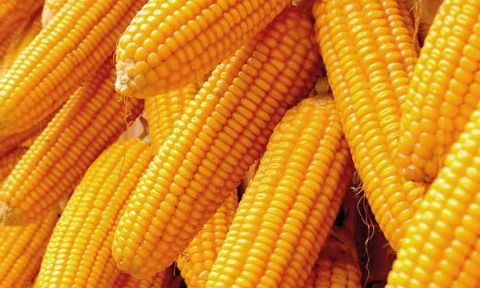Except for a few feed manufacturers who keep to the standards in poultry feed formulations, many feed companies in Nigeria make very poor quality feeds, a situation which has resulted in huge losses. Poor quality feeds lead to slow growth in chickens, low egg production, diseases, and death. Formulating your poultry feeds on the farm is one of the best ways to maintain quality and cut the cost of production.
The common feed ingredients are whole maize, cotton seed cake, soya beans, sunflower or fish meal. In addition, farmers need to add several other feed additives (micronutrients, minerals and vitamins) to ensure that their chickens have a balanced feed that meets their daily nutrient requirements.
Livestock feed materials are available cheaply, especially after the harvesting season. Depending on the costs of the raw materials, farmers who make their feeds at home save between 30% to 50% for every 70kg bag of chicken feed, depending on the source of their raw materials.
Due to government regulation, major feed companies have reduced the standard quantity of feed 25kg per bag, but the price of feed still remains almost the same. This means that farmers who can make their own feed make great savings on feeds which take up to 80 percent of the production costs.
To formulate livestock feeds, farmers have to use the Pearson Square method. In this method, the digestible crude protein (DCP) is the basic nutritional requirement for any feed preparation for all animals and birds.
Assuming that a farmer wants to make feed for his/her chicken using this method, he/she has to know the crude protein content of each of the ingredients to be used for making the feed.
The following are the DCP values for each of the common ingredients used in feed making:
Whole maize—8.23%
Soya—45%
Fishmeal—55%
Maize bran—7%
Sunflower—35%
Each class of chicken has its nutritional requirement. For example, if we want to make feed for layers, the feed should have at least 18% crude protein.
To formulate feed for layers, then you would have to calculate the percentage of DCP in each of the ingredients you want to use to ensure that the total crude protein content is at least 18%.
Therefore, to make a 50kg bag of feed for layers, a livestock farmer would require the following quantity of ingredients:
24.3kg of whole maize = 24.3kg
8.6kg of soya = 8.6kg
5.7kg of fishmeal= 5.7kg
7.1kg of maize bran= 7.1kg
4.3kg of limestone (as a calcium source) = 4.3kg
To find out if all the above ingredients meet this standard of 18% crude protein, a farmer can do a simple calculation as follows:
Whole maize — 24.3kg x 8.23 ÷100 = 2.0%
Soya — 8.6kg x 45kg ÷ 100 = 3.87%
Fishmeal — 5.7kg x 55kg ÷ 100 = 3.14%
Maize Bran— 7.1kg x 7kg ÷ 100 = 0.5%
Lime — 4.3kg x 0 kg ÷ 100 = 0.00%
Total % of crude protein = 2.00 + 3.87 + 3.14 + 0.5 + 0 = 9.51%
To get the total crude protein percentage of all these ingredients in a 50kg bag of feed, the farmer should take this crude protein content of the combined ingredients, divide by 50kg and multiply by 100,
Thus; 9.51 ÷ 50 × 100 = 18%.
This shows that the crude protein content of the above feed formulation is 19%, which is quite adequate for layers.
To ensure the chicken to get all they need in terms of nutrients such as vitamins, minerals and amino acids, you need these additives in their standard quantities.
Digestible Crude Protein requirement for:
Layers chick—18-20% CP
Growers—16% CP
Layers—18% CP
Broilers—22-24% CP
- The feed should contain calcium for the formation of eggshells. Laying hens that do not get enough calcium will use the calcium stored in their own bone tissue to produce eggshells.
- Layer feed should be introduced at 18 weeks.
- Farmers who have more than 500 chickens, it is advisable to make 1 tonne of feed at once
- Ensure that all the feed you make will last for one month and not longer. This ensures that the feed remains fresh and safe for chickens. Any feed that lasts more than one month may deteriorate in quality and can affect your chickens.
Daily feed requirements for each growth stage
Farmers should maintain the right feed quantities for chicken at each stage of growth as shown below:
- An egg-laying chicken requires 130-140g of feed per day.
- A chick requires a minimum 60g per day. If they finish their daily rations, give them fruit and vegetable cuttings to ensure they feed continuously.
- Young chickens (or pullets) which are about to start laying eggs should be fed 60g for 2 and ½ months and then put on layer diet (140g per day). Supplement the feed with vegetables, edible plant leaves and fruit peelings in addition to their feed rations.
- Broiler chicks require 67g per day. Broiler finishers require 67g of feed per day to the day of slaughter.
- Chickens are very sensitive to aflatoxins- never use rotten ingredients while making feeds.
Where to buy ingredients
Farmers who need raw materials for feed making including feed additives (pre-mixes and amino acids) can order them from a reputable feedmill nearest to them.
Important tips on feed preparation
- When making feed rations yourself, it is important to do experimental trials, by isolating a number of chickens, feeding them and observing their performance. If the feed rations are right, the broilers will grow fast and layers will increase egg production (at least 1 egg after every 27 hours).
- Buy quality fishmeal from reputable companies. If fishmeal is used, the farmers must be sure of its quality; most of the fishmeal in the markets is contaminated. Farmers are advised to go for soya meal if they cannot get good quality fishmeal.
- Always mix the micronutrients first before mixing them with the rest of the feed.
- For mixing, farmers are advised to use a drum mixer. Using a shovel to mix feed is not recommended because the ingredients will be unevenly distributed.





73638 456494I genuinely like your writing style, amazing data, thankyou for posting : D. 126123